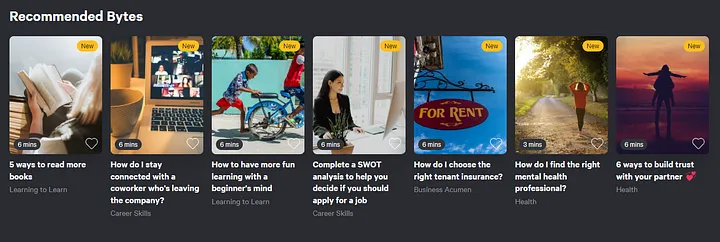An average user interacts with 40 applications every month. Each one of them demands as much attention as possible.
According to a survey run in February 2021 in the US, almost half of the respondents stated that, on average, they spent five to six hours on their smartphones every day, not including work-related use.
The fact is that this is not going to change. You will continue to have less and less time.
So how do you learn something when you do not have time?
The answer is Microlearning.
What is Microlearning
Microlearning is learning in small bites. It is also called byte learning (a byte is a short-size digital measure). Microlearning is eating a whole cake in small pieces, one little bite at a time.
For example, if you are curious about the Internet of things (IoT) and don’t want to go through a lengthy course, you can get the basics in only 3 minutes.
Why Microlearning Is a Practical Learning Method
- It fits with a short attention span(currently at around 8 seconds).
- Sometimes you are just curious about something, but you don’t know if you want to spend plenty of time on it.
- It takes only 5 or 10 minutes of your busy schedule.
- It helps you understand current topics.
- It is excellent to discover matters that you might want to develop.
Microlearning doesn’t always bring superficial knowledge. You can deep dive into those topics with the right learning program.
For example, I am interested in languages. So every morning, I spend five minutes taking a language lesson in Duolingo. That consistent short-timed activity resulted in notable improvements in my German skills.

When using solely, the most significant risk of Microlearning is becoming a “Jack of all trades, master of none.” Someone with basic knowledge of many subjects but not an expert in any.
How to Start with Microlearning
In the latest years, the offering has increased considerably.
New corporate LMS (Learning Management Systems) incorporate Microlearning, and there are several options on the Internet where to start for free:

- Rumie: Is a relatively new player. It is entirely free and respectful of your data. You don’t even need to create an account. Many topics are around career, mental health, and personal finances.
- Duolingo is one of the pioneers in the Microlearning ecosystem. Their app is an excellent example of gamification for learning languages.
- Mimo is a new app that uses the same concept as Duolingo to teach coding. Quick daily lessons for the long-term compound effect.
Conclusion
Microlearning is a way of learning adapted to the digital era.
It is a great way to acquire knowledge or understand a topic like for example NFTs (Non Fungible Tokens). Something I knew nothing about two months ago, and I now have a rough idea about what they are. Microlearning is like reading the summary of a book before buying it.
While I blatantly support formal education. I am no longer so sure about long courses (+1 Year). The reason is that technology and our society advances at such a fast pace that anything could be considered “old” after six months.
Surface knowledge doesn’t mean poor knowledge. It is just elementary. And to know the basics or something is better than knowing nothing.





